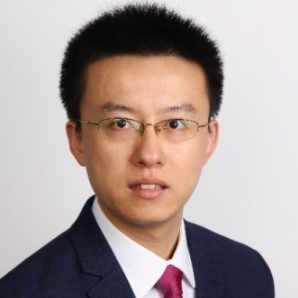Functional 3D Printed Ceramics
A special issue of Materials (ISSN 1996-1944). This special issue belongs to the section "Advanced and Functional Ceramics and Glasses".
Deadline for manuscript submissions: closed (20 January 2023) | Viewed by 1701
Special Issue Editors
Interests: ceramics; additive manufacturing; 3D printing; application
Special Issues, Collections and Topics in MDPI journals
Interests: structural ceramics; ceramic matrix composites
Special Issues, Collections and Topics in MDPI journals
2. Department of Mechanical and Energy Engineering, Southern University of Science and Technology, Shenzhen 518055, China
Interests: stereolithography; direct ink writing; zirconia; alumina; ceramic matrix composites; additive manufacturing; damage and failure mechanics of composites
Special Issue Information
Dear Colleagues,
Additive manufacturing (AM), also referred to as 3D printing, is a process of making three-dimensional components by adding materials layer-upon-layer guided by 3D CAD model data instead of removing materials. AM enables the creation of ceramic parts with customized and highly complex geometries while minimizing the amount of machining and the expensive and laborious fabrication of the required molds. Nowadays, a large variety of AM techniques can be used to shape ceramics, including photopolymerization (SLA/DLP), direct ink writing (DIW), binder jetting (BJ), inkjet printing (IJP), selective laser sintering/melting (SLS/SLM), lamination object manufacturing (LOM), laser-engineered net shaping (LENS), and emerging hybrid AM.
Previously, researchers mainly focused on AM of structural ceramic components, including additive manufacturing technologies, sintering approaches, densification methods, microstructure, and mechanical properties. Recently, AM of functional ceramics or ceramics with functional design has become popular. On the one hand, functional ceramics—including piezoelectric ceramics, ferroelectric ceramics, thermoelectric ceramics, microwave dielectric ceramics, energy storage ceramics, etc.—have been widely studied. On the other hand, more interestingly, ceramic structures with functional design, such as negative stiffness or negative Poisson's ratio, electromagnetic absorbing behavior, energy-absorbing behavior, acoustic behavior, thermal behavior, etc., have drawn much attention. Therefore, the study of functional 3D-printed ceramics holds a promising future in this field.
The main aim of this Special Issue is to collect various recent developments in functional 3D-printed ceramics of materials. Papers presenting additive manufacturing of functional ceramics are welcome. In addition, studies that focus on the additive manufacturing of ceramic structures with functional design, negative stiffness or negative Poisson's ratio, electromagnetic absorbing behavior, energy-absorbing behavior, acoustic behavior, thermal behavior, etc., are welcome. Authors are also encouraged to present new design methods, processing technologies, and characterization approaches and mechanisms to provide a complete framework on functional 3D-printed ceramics and facilitate their use in different applications.
Prof. Dr. Jiamin Wu
Prof. Dr. Rujie He
Dr. Jinxing Sun
Guest Editors
Manuscript Submission Information
Manuscripts should be submitted online at www.mdpi.com by registering and logging in to this website. Once you are registered, click here to go to the submission form. Manuscripts can be submitted until the deadline. All submissions that pass pre-check are peer-reviewed. Accepted papers will be published continuously in the journal (as soon as accepted) and will be listed together on the special issue website. Research articles, review articles as well as short communications are invited. For planned papers, a title and short abstract (about 100 words) can be sent to the Editorial Office for announcement on this website.
Submitted manuscripts should not have been published previously, nor be under consideration for publication elsewhere (except conference proceedings papers). All manuscripts are thoroughly refereed through a single-blind peer-review process. A guide for authors and other relevant information for submission of manuscripts is available on the Instructions for Authors page. Materials is an international peer-reviewed open access semimonthly journal published by MDPI.
Please visit the Instructions for Authors page before submitting a manuscript. The Article Processing Charge (APC) for publication in this open access journal is 2600 CHF (Swiss Francs). Submitted papers should be well formatted and use good English. Authors may use MDPI's English editing service prior to publication or during author revisions.
Keywords
- additive manufacturing of functional ceramics
- additive manufacturing of ceramic structures with functional design
- piezoelectric ceramics
- ferroelectric ceramics
- thermoelectric ceramics
- microwave dielectric ceramics
- energy storage ceramics
- negative stiffness or negative poisson's ratio
- electromagnetic absorbing behavior
- energy-absorbing behavior
- acoustic behavior
- thermal behavior








